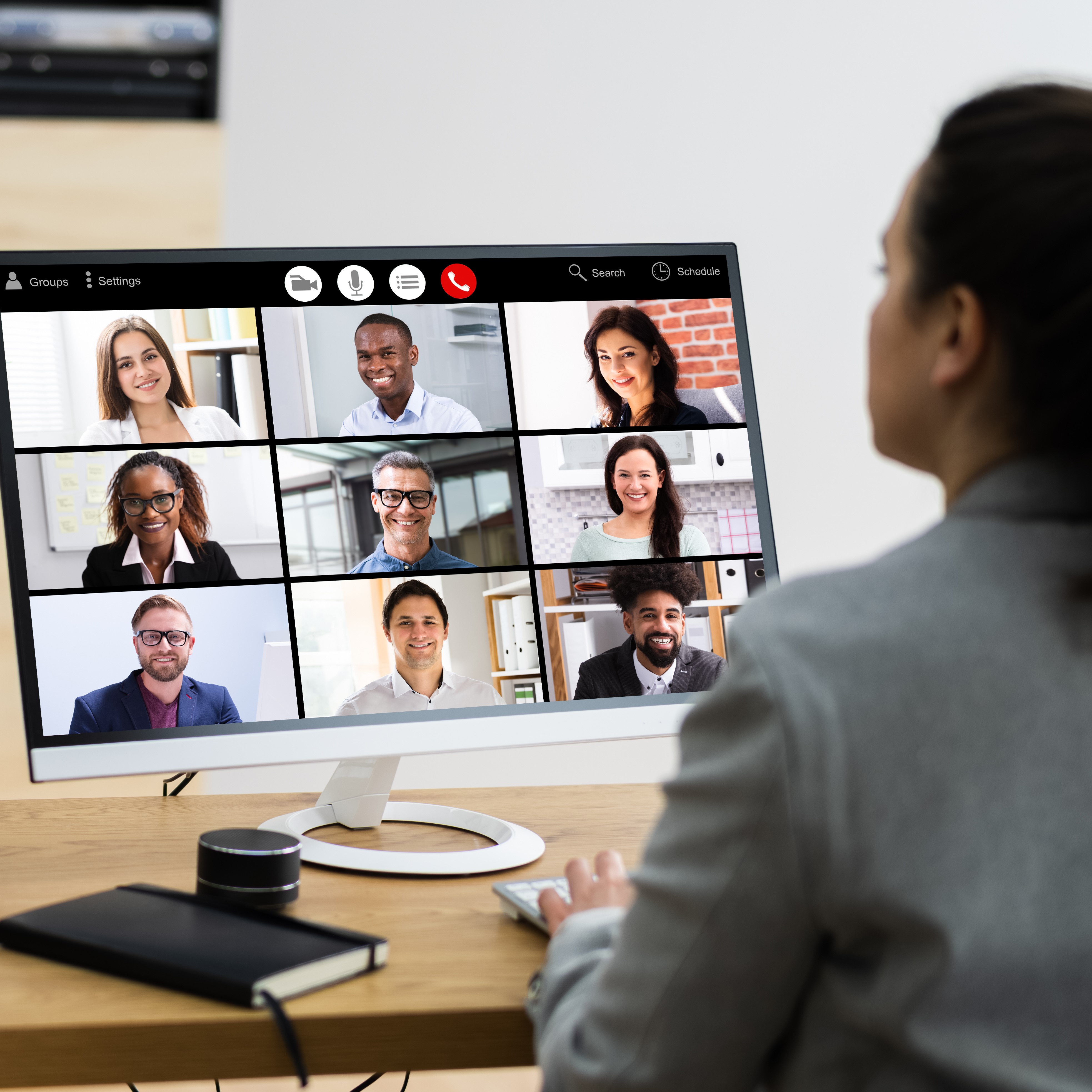How to Introduce Change in the Workplace
May 16, 2022
It's easy to look back at change management strategies and see why they failed. The hard part is looking at failure — yours or someone else's — and figuring out how to use it to fuel your improvement.
In this blog, we focus on the people’s side of change. There is a graveyard of bankrupt and defunct companies that made this blunder. They made the mistake of focusing solely on the business side of the change and not starting with communicating with the team members and gaining buy-in before the final plans are decided and implemented.
Always consider who will be most affected by a change. Often, those people are within your company, but not always. Look at the transition from multiple angles before committing.
Change in the workplace is implemented to benefit the organization, whether the planned goal is increasing the bottom line or improving customer relations. Even the best employees can balk at changing practices and procedures they see as working well.
Behavioral studies show that close to 75% of the adult population has a high resistance to change. Think about this. They are often led by executives who are highly comfortable with change and are pretty adept at making them. These executives often fail to consider that everyone does not think like them and have an easy comfort level with change.
The changes, when implemented, will often lead to high levels of passive resistance or even out-and-out insubordination. It is too often the case that good team members will bail due to the changes taking place in the organization. This human resistance can create delays in the timelines of implementing the changes and additional costs. I think I've made my point. Give your employees a sense of ownership and say along with the benefits of the planned goal before implementing changes. You'll have an easier time putting the needed changes in place.
Advertise Your Goal
Inform all your employees of your planned goal. Make them aware that you will be expecting, for example, a 5-percent increase in sales or improved numbers in regards to customer service. Be specific with the figures and the methods by which you'll measure the progress and success toward your chosen goal.
Emphasize the Benefits
Create a sense of enthusiasm toward the coming changes by pointing out the benefits of achieving your new goal. You may be able to afford bonuses if your bottom-line increases or your corporate headquarters may reward your unit if expenses go down by a certain percentage. Make your employees aware of how they will benefit by hitting your goal. What's in it for them?
Make Change Possible
Create and provide training for all employees to help them achieve the needed changes. Teach them new procedures, hold classes on controllable cost savings, or hold meetings to demonstrate best practices in customer relations. Give your people the tools with which they can succeed.

Listen
Monitor the progress while the change is occurring. Make it known that you welcome feedback and listen to any employees' concerns. While some may object to specific changes simply because they were used to the old way of doing things, others may have intelligent and legitimate alternate solutions that you should consider. Implement any employee-based ideas you can to make the transition go more smoothly.
Want to Maximize Employee Buy In?
TIPS FOR GAINING EMPLOYEE BUY-IN
- ASSUME RESISTANCE TO CHANGE.
- HAVE A CLEAR VISION.
- COMMUNICATE, COMMUNICATE, AND THEN COMMUNICATE SOME MORE.
- KNOW YOUR PEOPLE.
- COLLABORATION.
- PROVIDE EMPLOYEE TRAINING THAT SUPPORTS THE CHANGE
ASSUME RESISTANCE TO CHANGE
Employees don't fear change; they fear the unknown.
We are an adaptable species that don't like to change. Although we will change, given an appropriate amount of reasoning or adoption of the new thing by influencers. Resistance to change is a natural reaction. Change is uncomfortable and requires new ways of thinking and performing their job.
So, when considering employee buy-in assume there will be some resistance to change and proactively identify major employee objections. Once you understand potential objections, you can find ways to acknowledge and overcome them.

HAVE A CLEAR VISION
As you develop changes or make decisions that will affect your workforce, you should consider how you communicate these changes and their reasoning. Clearly state what will be changing and why.
Make sure you show them why these changes matter to the organization, positively impact their careers, and how you plan to measure success. Employees have no reason to be on board with your current approach without knowing why you're starting a new initiative.
People have trouble developing a vision of what life will look like on the other side of a change. So, they tend to cling to the known rather than embrace the unknown. If your vision for the future is clear and communicated well, then your team will be more willing to follow you forward.
COMMUNICATE, COMMUNICATE, AND THEN COMMUNICATE SOME MORE
One of the best ways to build trust with your team members is to be open and transparent with your intentions, projects, and progress. Establish a constant communication plan to keep your team involved in your improvement efforts. Use many different forums to consistently communicate the vision and the new changes: large group meetings, memos, emails, newsletters, posters, and informal one-on-one talks.
Real buy-in invites discussion and debate and allows everyone to feel even more vested in the outcome. These discussions must be an open dialog. Avoid at all costs a one-way download monolog. Establish a way for team members to communicate with you about their thoughts on the proposed changes. The feedback you'll receive is critical and will allow you to refine your targets and foresee roadblocks that you may have been unaware of.

KNOW YOUR PEOPLE
A good leader knows their people. In every organization, there are individuals with differing levels of influence, both officially and unofficially. Knowing who your influencers are within your employee base is a big part of this: both positive influencers and negative. There are always a few individuals who hold sway over their peers and help influence the opinion and actions of the masses.
After a new initiative is announced, these are the ones who get together and have the "meeting after the meeting," where that influencer tells the rest of the team how they should interpret the message/vision that was just discussed. You must work hard to get them bought in for the negative influencers. If that is not possible, you need to consider how to isolate their influence.
Know your people and know who the influencers are that can make or break your initiatives. Informally meet with the individual(s) with the most influence before announcing the improvement initiative to the entire team and have one-on-one discussions to share your vision and the reasoning behind the pending improvement initiatives. Listen to their thoughts on the plan and answer any questions they may have. Moving forward without the buy-in of your key influencers will most likely result in poor acceptance by the larger group. Taking your time to get your top influencers on board first will smooth the path towards gaining the buy-in of all your employees.

COLLABORATION
Having a culture of collaboration enables organizations to maximize the knowledge and capabilities of their employees. Ideas and information spread more easily when employees communicate and collaborate across an organization. When planning your improvement initiatives, assemble a diverse team to collaborate and present ideas.
Process improvement is a team effort, so it is essential to let everyone know "we're in this together." Some businesses hold cross-functional process improvement brainstorming sessions to demonstrate this attitude to get teams thinking outside the box about process improvement. These sessions can also serve as an opportunity to work through process pain points together to jointly develop the best improvement ideas.
Assign Team Captains or Change Leads to form committees for daily weekly discussions. Choose your "influencers."
EMPLOYEE TRAINING
People are only as effective as the tools that they have available. Ensure that your team has the proper training, ongoing support, and resources to get involved with your improvement initiatives.
The impact of offering training to your team is two-fold. First, it ensures your teams have the proper training, ongoing support, and the resources they need to get involved with and contribute to your continuous improvement initiatives. Second, providing your employees with training that will further their skill-sets demonstrates the organization's willingness to invest in them and their careers.
- How do you plan to involve your employees in the change process?
- How will you bring resistance to change out in the open?
- If a layoff is a reason for the change, how will you help employees grieve?
- How do you plan to treat the survivors?
- What will you do in the way of 'replacement?'
- If you feel afraid or resistant to change, how do you plan to help yourself?
- Have you thought about 'reinvesting' in employees? If not, why not?
- How would delegating benefit you during change?
- If change is due to rapid growth, do you have a plan?
- How will you convince your employees you have their best interest at heart?
- Are you prepared to give your employees enough time to adjust to change?
- How can you improve communication during times of change?
Listen To Our Podcast On How to Collaborate With Your Team
About the author:
Vaughn is the co-founder of Results-Driven Leadership. He is a leadership development expert, podcaster, and author. His methods are brought from his real-world experience working on the front lines and living the role of being a high-impact leader and manager. There was no theory, just common-sense advice and direction from someone who developed the team that scaled a $2 Billion business with 3000 employees. CarMax is the world's largest and most respected company in the auto industry and is a Fortune 100 Best Places to Work.
Vaughn's mission is to improve the impact of executives and other managers by increasing their knowledge, skills, and abilities.
His motto is "No matter what business you're in; you're in the people business."
Learn More About Our Online Training Courses
Contact [email protected] for a Free Consultation
Stay connected with news and updates!
Join our mailing list to receive the latest news and updates from our team.
Don't worry, your information will not be shared.
We hate SPAM. We will never sell your information, for any reason.

